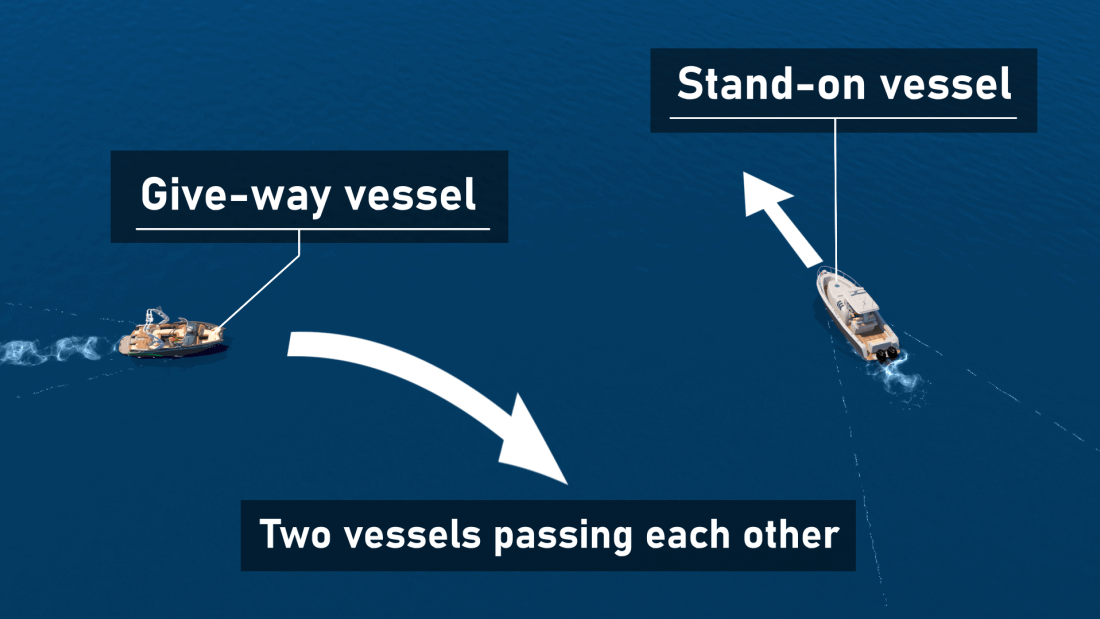Vessel crossing situations - Boating right of way rules Collision regulations
As the operator of a power-driven vessel, what should you do if you meet another power-driven vessel?
When two power driven boats are approaching at right angles or nearly so, and risk of collision exists, the boat on the right is the stand-on vessel, has the right of way and must hold its course and speed. The other boat, the give-way vessel, shall maneuver to keep clear of the stand-on vessel and shall pass it by its stern. If necessary, slow, stop or reverse until the stand-on vessel is clear.

A powerboat is about to cross paths with a sailboat under sail. What should the powerboat do?
In this situation, the power-driven vessel should alter course to pass behind the sailing vessel. When approaching a non-powered craft, such as a sailboat or canoe, you are the give-way craft and do not have the right-of-way. You must take early and substantial action to keep clear of non-powered craft.

